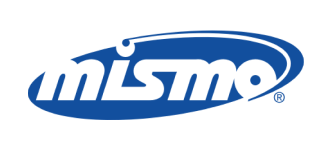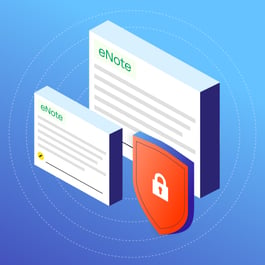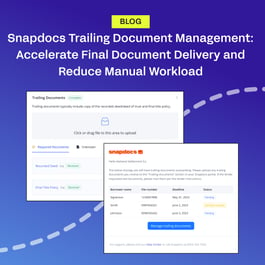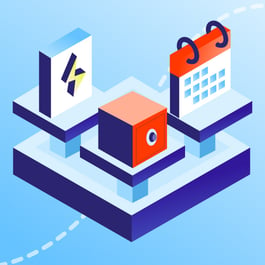Welcome to Mortgage Industry Trailblazers, our ongoing interview series with innovative, forward-thinking professionals in the mortgage industry, hosted by Camelia Martin, Snapdocs’ Head of Industry and Regulatory Affairs. The series will take a look at the problems and solutions the industry is facing, through the eyes of some of its top leaders.
When you think of the GSEs, you might immediately think of Fannie Mae or Freddie Mac. But the Federal Home Loan Bank System is also a GSE, and the 11 regional banks that make up the FHLB System provide access to billions of dollars in low-cost funding to nearly 7,000 of the nation’s financial institutions. The regional nature of the FHLBs allows each to focus on the unique needs of their respective communities.
It’s this same focus and responsiveness to the needs of its member institutions that drove the FHLB System to enable innovation and begin the process of updating its guidelines to accept electronic promissory notes (eNotes).
As Vice President and Director of Collateral Management with the Federal Home Loan Bank of Des Moines, Vonda led the charge for the acceptance of eNotes at the FHLB of Des Moines, and helped develop the guidelines for eNote acceptance for the entire FHLB System
Below is a lightly-edited transcript of our discussion with Vonda about her work leading eNote acceptance initiative at the FHLB of Des Moines, and the roles that institutions like the Federal Home Loan Banks and technology vendors play in enabling the widespread adoption of eClosings.
Camelia: Vonda, I first met you when you were part of the team that was researching eNote acceptance and evaluating the different options for the FHLB System’s acceptance of eNotes. You and the rest of the teams at the FHLBs have made so much great progress since then. When were you first exposed to the concept of eNotes and eClosings? Do you remember your initial thoughts about them, and how has that initial impression changed over the years?
Vonda: It started with our members asking for this. They said, “When are you going to get with the times? We need digital closings. We need to capitalize on the efficiencies of eClosings, but we can’t do that if we can’t pledge those loans as collateral, because we need the Federal Home Loan Bank for our liquidity.” We listened and whenever a member asks for something in our realm, we really have to ask three key questions: First of all, does it meet regulation? Because we are a highly regulated GSE. Then, would we be able to value that? And, would we be able to liquidate that asset? Those are things we have to consider.
We looked at the first question, does it meet regulation? Well, the regulations don’t specifically say we can take eNotes, but they don’t say we can’t. Around 2017, all of the Federal Home Loan Banks came together and said, “You know what, we’re hearing the same thing from our members. Let’s try to do this together and collaborate together and get to the same end result.” So that’s where it all started.
As we educated ourselves, the fact that the collateral is still a one-to-four, family-first mortgage. It isn’t about it being an eNote or a paper note. It’s still that same collateral, just a different format. So, it was a change of mindset I think. If you really concentrate on the characteristics of the note and the borrower – for example, if FICOs are equal, income is equal, loan-to-value is equal, and they’re paying their mortgage – you wouldn’t know if they signed with the click of a mouse or wet ink. It was a whole change of mindset and a whole lot of education that helped along our journey.
Camelia: That’s a great way to put it. The asset is the same. The collateral is the same, but the format that the collateral or asset took was digital versus being paper. It’s not that it’s lesser. At Snapdocs, we would argue – as certainly others have – that eNotes are a lot more secure than paper notes.
The FHLB of Des Moines was the first to announce its eNote acceptance program back in July of 2019, and one of the first FHLBs to accept live production eNotes. From the outside looking in, this sounds a lot simpler than I’m sure it was. What did it take to get to this point?
Vonda: It was very exciting. While we may have been one of the first, we definitely had some luck on our side. First of all, all of the FHLBs worked together, so we shared the heavy lifting. All 11 FHLBs knew from the beginning that we were going to get to step one – writing requirements – together. From that point, we all knew that implementation had to go down to each individual bank. Des Moines was lucky that we had members asking for it at the time. We had strong backing, and we had prioritized the project. That was all on our side. To cross the finish line to implementation, it takes a business partner, a member in our case, that’s also willing and ready to do that testing. Des Moines was lucky enough to have that, so we were one of the first, but we also have to congratulate our members that were also on the leading edge of technology and ready to move into the eNote world.
Camelia: Des Moines was fortunate to have this confluence of factors in place: not only demand from your members, prioritization for the project, and certainly the collaboration across the other FHLBs, but also a willing member on the other side to go through that process with you. Those are the very same key components that we hear from lenders that have had successful transitions to eClosings and eNotes. They’re also asking, “Am I getting sufficient demand for my borrowers? Is the tone being set from the top? Is it being prioritized so that we have the resources allocated and are my counterparts willing and able to take this journey with me.” In this example, it was the FHLB of Des Moines, but in others it might be the lender’s investors, warehouse lenders, servicers, or subservicers.
There’s no question that eClosings provide numerous benefits for every participant involved. We typically talk about these benefits in terms of an improved borrower experience, convenience, or efficiencies for lenders, which in your case would be your members. What would you say was the greatest benefit for the FHLB of Des Moines?
Vonda: We did not want to get in our members’ way. They were going to go down this path whether we were on board or not, and in order to serve the mission of the Federal Home Loan Bank, we need to be that liquidity source for our members. We did not want to be the roadblock that stopped them from going digital.
I think the pandemic made our members see things in a whole different light too. For those who were thinking about going digital, it created a little urgency to go that way. I do want to emphasize though, it’s still not a time to cut corners. We definitely need the controls behind the digital signature, the tamper seal, the audit trail-those controls that ensure that it’s the borrower that’s actually clicking the mouse. The pandemic has led to a lot of concessions in the industry, but we still need to do things the right way.
Camelia: Absolutely. It was so fortunate that Des Moines and the other FHLBs initiated these efforts well before the pandemic. That head start was certainly helpful in terms of laying the framework for digital collateral requirements and getting the FHLB System to the acceptance start line more quickly.
eClosings are not something you can just turn on overnight. We saw a lot of lenders that went from viewing eClosings as something that’s nice to have, or something that might make them a more convenient or pleasant experience for borrowers, to all of a sudden being an imperative. They weren’t always able to make that pivot as quickly as they wanted to though, because they had to make sure that corresponding requirements and the control frameworks to ensure compliance were well understood and woven into their existing workflows.
To your point, making sure that you understand what the different processes look like, the role these systems play in authenticating borrowers and tying them to eSignatures, what it means to have an eNote tamper-evident sealed and registered on the MERS eRegistry, how rights in eNotes are transferred, and so on. The learning curve can be steep, but achievable and benefits are well worth the investment. As barriers to eClosing adoption continue to fall, there’s clearly a domino effect. We have triple the number of states allowing for eNotarization than we did just several years ago. And with more than 87% of the population covered by counties that enable eRecoding, the policy and legislative landscape is paving the way for more and more participants to enable eClosings and to scale those efforts. As you pointed out, the FHLBs didn’t want to stand in members’ way, and didn’t want to be yet another barrier to them being able to adopt eClosings. They want to facilitate and support this transition for the industry.
As this landscape continues to expand, as technology continues to advance, what role do you see the FHLBs continuing to play in supporting this momentum? And, what role do you see technology providers like Snapdocs playing?
Vonda: We continue to be one of the pillars of liquidity for our members and we designed our requirements to be very closely aligned with the other GSEs. We want them to be able to go to the closing table and close an eNote, and even if they don’t know whether they are going to sell it to an investor or to keep it in portfolio and pledge that to us as collateral in order to get funding, they don’t have to have that decision right at the closing table. As long as that eNote is registered within a business day, they have that option down the road. We aligned with the rest of the ecosystem so that we can continue to be a liquidity choice for our members.
Technology vendors like Snapdocs are bridging the gap for our members. They already have their core banking systems, and their LOS, and whatever they’ve been using to originate traditional paper wet-ink closings. Now they can look at their processes and figure out what they’re missing in order to jump into the digital space. There are vendors out there that are willing to bridge that gap and either be the piece they’re missing, or a one-stop shop solution. It’s important that members understand that they don’t have to build an entirely new system or change the parts of the processes or technology that is working well. They can augment that by bringing in expert vendors to fill these voids for them.
Camelia: So well said, Vonda! At Snapdocs, we see ourselves as more than our lenders’ technology provider. We want to be their trusted advisor and partner. We view implementation as more than just about the technology. There are so many other factors to consider, particularly the critical change management that needs to occur to effectively implement eMortgages. Lenders need to ask themselves, “How can eMortgage requirements be woven into our existing workflows and control frameworks? How can we have the confidence in our processes to close eMortgages at scale without sacrificing compliance? How can we allow for eClosings that fall onto a spectrum of eClosing types without having to manage numerous processes and platforms? Lenders need uniformity in process and new guardrails to account for these changes to be successful.
This is our last question for you, but perhaps the most important one. You’ve been going through this eNote acceptance journey with the FHLB of Des Moines for some time now. You mentioned that you invested the time to see how other stakeholders like Fannie Mae and Freddie Mac implemented their digital collateral programs. I appreciate the fact that you also took the time to understand how technology providers like Snapdocs fit into all of this. Having seen this process through multiple participants’ perspectives, what would be the one piece of advice that you would offer to your members-or any lenders that are considering implementing digital mortgage closings?
Vonda: Don’t fear the unknown. It is so easy when you don’t understand something to just throw your hands up and say, “It’s not worth it. I’m just going to do it the old way.” There is some work upfront, but it’s mostly gaining knowledge, seeing what works together, collaborating with the technology providers, seeing where those gaps are. Don’t be afraid to dive in and learn before you say “no”. This digital transition in the industry is inevitable, and there’s tremendous value in taking the first step to educate yourself so you can make the best decisions for your organization.
Camelia: Sound advice. Vonda. The mortgage industry is so fortunate to have your leadership and guidance. Thank you so much for sharing your perspectives with us today. We’ll continue to keep a close eye on all of the progress you’re making at the FHLB of Des Moines and will be cheering you on as you continue blazing trails!



















